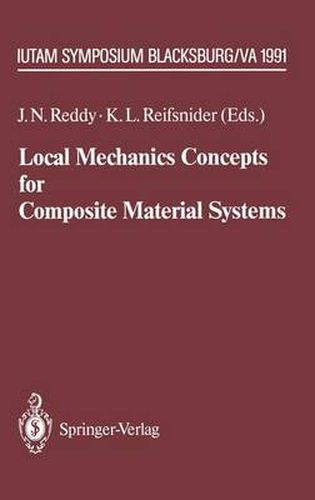Readings Newsletter
Become a Readings Member to make your shopping experience even easier.
Sign in or sign up for free!
You’re not far away from qualifying for FREE standard shipping within Australia
You’ve qualified for FREE standard shipping within Australia
The cart is loading…






This title is printed to order. This book may have been self-published. If so, we cannot guarantee the quality of the content. In the main most books will have gone through the editing process however some may not. We therefore suggest that you be aware of this before ordering this book. If in doubt check either the author or publisher’s details as we are unable to accept any returns unless they are faulty. Please contact us if you have any questions.
The application of composite materials to engineering components has spurred a ma jor effort to analyze such materials and the structures made from them. Most researchers workin~ in mechanics of composite structures understand that composite materials pro vide umque advantages but also present complex and challenging problems to researchers. The complex inelastic behavior and variety of failure modes of composite structures are a result of the strength and stiffness properties of constituents and their complex interac tions. Macromechanical constitutive models based on gross composite properties cannot realistically represent local interactions, and thus have serious limitations. The composite materials that are of most interest to engineering applications are often brittle in their behavior, in the sense that the strength and life of the material systems is controlled or greatly influenced by events or processes which involve volumes of material whose dimen sions are small compared to the global dimensions of the element. This is also true in ductile systems where local nonlinearity may contribute to local behavior which controls global response.
$9.00 standard shipping within Australia
FREE standard shipping within Australia for orders over $100.00
Express & International shipping calculated at checkout
This title is printed to order. This book may have been self-published. If so, we cannot guarantee the quality of the content. In the main most books will have gone through the editing process however some may not. We therefore suggest that you be aware of this before ordering this book. If in doubt check either the author or publisher’s details as we are unable to accept any returns unless they are faulty. Please contact us if you have any questions.
The application of composite materials to engineering components has spurred a ma jor effort to analyze such materials and the structures made from them. Most researchers workin~ in mechanics of composite structures understand that composite materials pro vide umque advantages but also present complex and challenging problems to researchers. The complex inelastic behavior and variety of failure modes of composite structures are a result of the strength and stiffness properties of constituents and their complex interac tions. Macromechanical constitutive models based on gross composite properties cannot realistically represent local interactions, and thus have serious limitations. The composite materials that are of most interest to engineering applications are often brittle in their behavior, in the sense that the strength and life of the material systems is controlled or greatly influenced by events or processes which involve volumes of material whose dimen sions are small compared to the global dimensions of the element. This is also true in ductile systems where local nonlinearity may contribute to local behavior which controls global response.